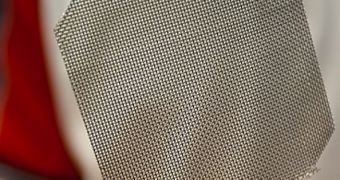People living in the deep desert have difficult times getting water to drink, and experts want to fix this issue by turning to nature for inspiration. They are developing a device that is inspired by a special type of beetle living in an African desert.
The insect, a member of the Stenocara gracilipes species, is called the Namib Beetle, because it lived in the Namib Desert, on the western coasts of Africa. Over millions of years of evolution, it has developed an unique and amazing mechanism of getting water in one of the most arid environments in the world.
Seeing how there are no sources of water at the surface, the insect has reoriented towards getting the water its needs from the air. However, the climate in the area where it lives is extremely arid.
Rather than kill it, this challenge made the beetle develop a type of adaptation that left scientists puzzled at its ingeniousness and simplicity. The carapace surrounding the insect is shaped in such a way, that when fog passes over, water condenses on it.
Grooves in this layer then channel the water droplets straight into the beetle's mouth, allowing it to drink sufficient amounts of water in areas where anything else except the harshest bacteria would die.
Now, a team of scientists based at the Massachusetts Institute of Technology (MIT) is seeking to emulate this ability synthetically. This would allow them to develop water-harvesting systems that would extract the precious liquid from fog clouds.
The investigation is led by chemical engineering PhD student Shreerang Chhatre, who is also an MBA student at the MIT Sloan School of Management. He holds an appointment as a fellow at the MIT Legatum Center for Development and Entrepreneurship as well.
“As a middle-class person, I think it’s terrible that the poor have to spend hours a day walking just to obtain a basic necessity,” the expert says of the reasons that drove the new research.
He adds that the most important thing that his team needs to achieve is the creation of a material that both attracts and repels water at the same time. The beetle's shell is made of bumps and troughs, which attract droplets, and then channel them away to where they are needed.
Official statistics made available by the UN World Health Organization and UNICEF show that nearly 900 million people around the world are lacking access to freshwater, so the work being done at MIT has the potential to influence nearly 1 in 7 people living on Earth.

 14 DAY TRIAL //
14 DAY TRIAL //